Seed heads of wild plants have a unique loveliness in the cold months. Garden writer Susie White celebrates their frosted delicacy and shows how you can bring their magic into your garden
Our expert guide explains how to cultivate seed heads for wildlife in the winter months and the different types of plant species to grow in your garden
Seeds are rich in protein and fats and are a vital winter food store for mice and voles, squirrels and birds. Birds that eat insects in summer widen their diet in winter; dunnocks supplement with nettle seeds and wrens look for alternative energy sources when their normal diet of tiny creatures isn’t available. Seeds vary enormously in size, from the plump black seeds of borage to the ‘dust’ produced by orchids and dispersed by the wind.
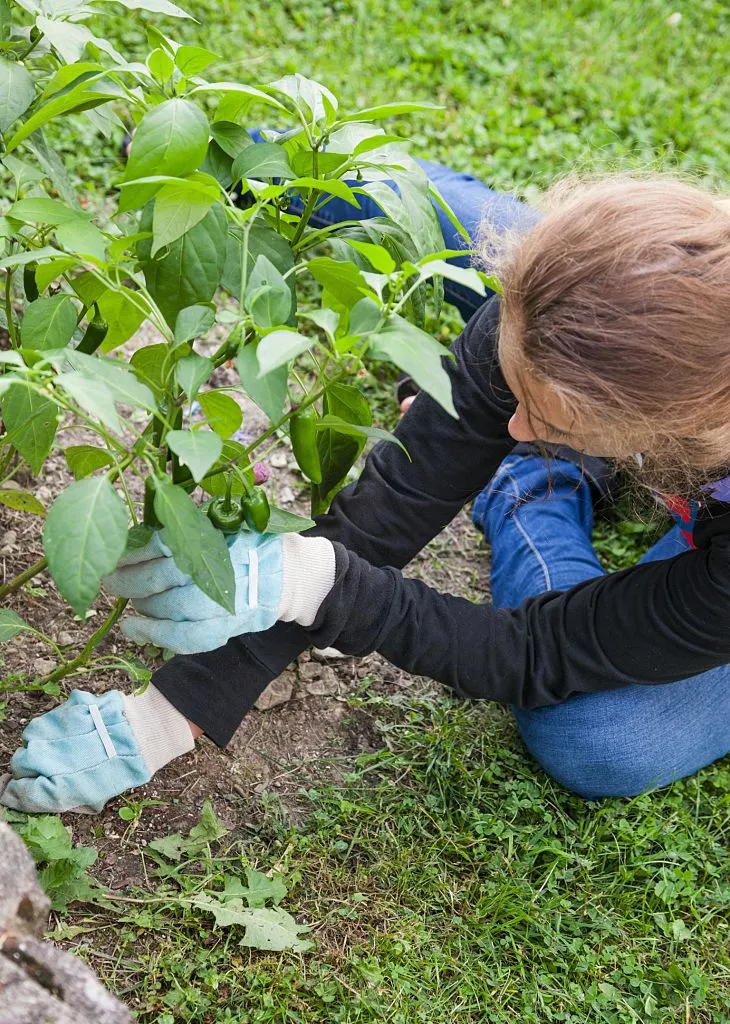
Cultivate for wildlife
Winter seed heads look as spectacular in the garden as they do in wild places, and can be just as beneficial to wildlife, attracting hungry birds. My own garden is a mix of the wild and the cultivated, with plants chosen for their benefit to wildlife as well as their beauty. This mix becomes a link between garden and landscape.
A wildlife garden doesn’t need to be an untidy one. Mine has an underlying formality of straight paths and topiary but the borders are fluid in style. Every plant is chosen for supplies of nectar or pollen, foliage for moth and butterfly larvae to feed on, or for its abundance of seed. Native plants self-seed freely so you need to be able to recognise them at seedling stage.
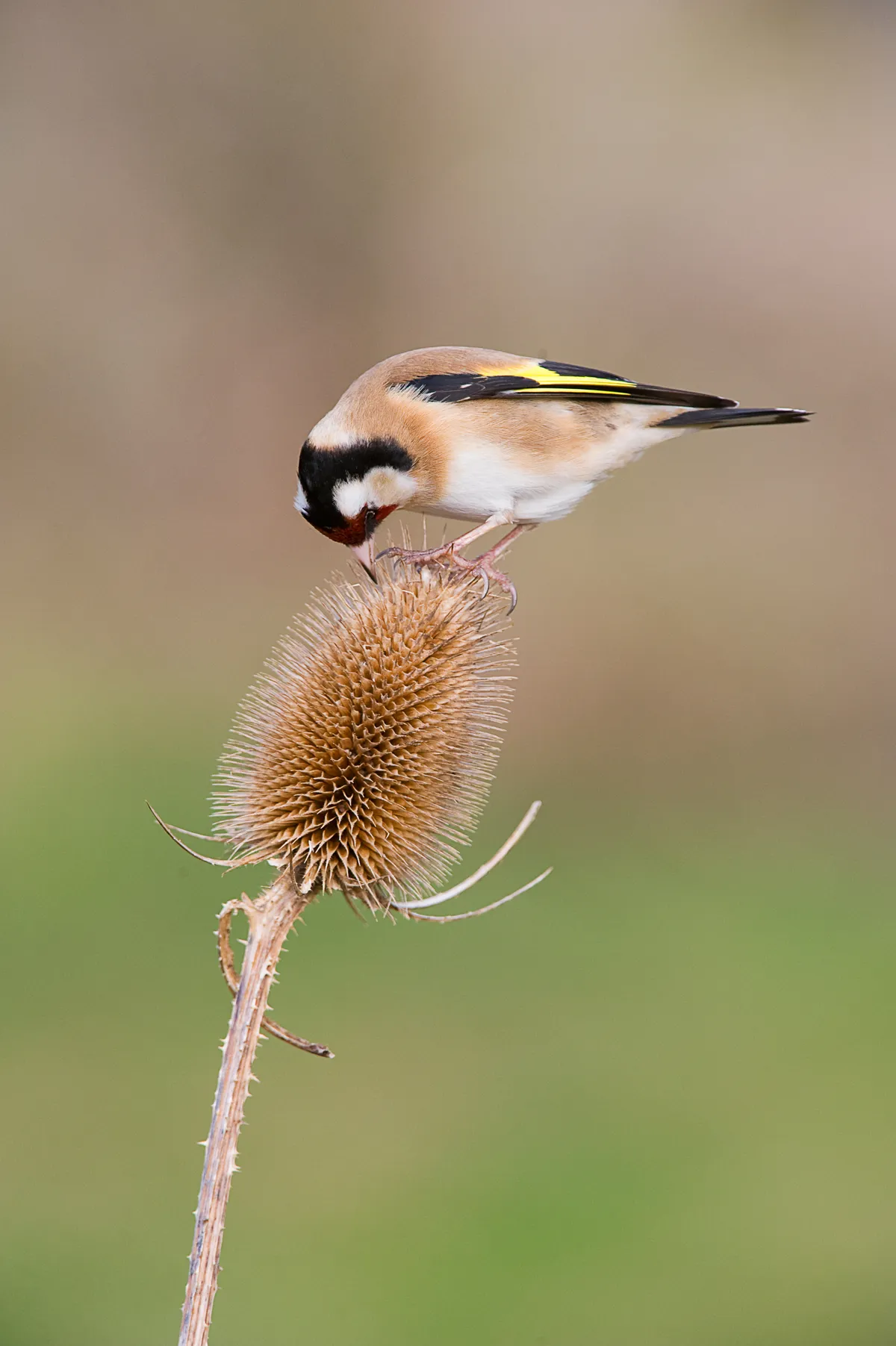
Try to move plants around the garden and edit as you visualise how they will grow and combine. Some can be overabundant seeders so you need to get the right balance. For example, wild marjoram or field scabious are often best left to grow among the long grass of a perennial meadow where they can spread without becoming over dominant.
How to create winter wildlife safety nets in your garden
Wide margins in farmland provide cover and food for a variety of birds and small mammals. Bullfinches extract the little oval seeds from nettles and goldfinches flock among thistles. For the garden, there are more elegant thistle alternatives, such as cardoon, artichoke and the pretty burgundy flowers of the plume thistle, Cirsium rivulare.
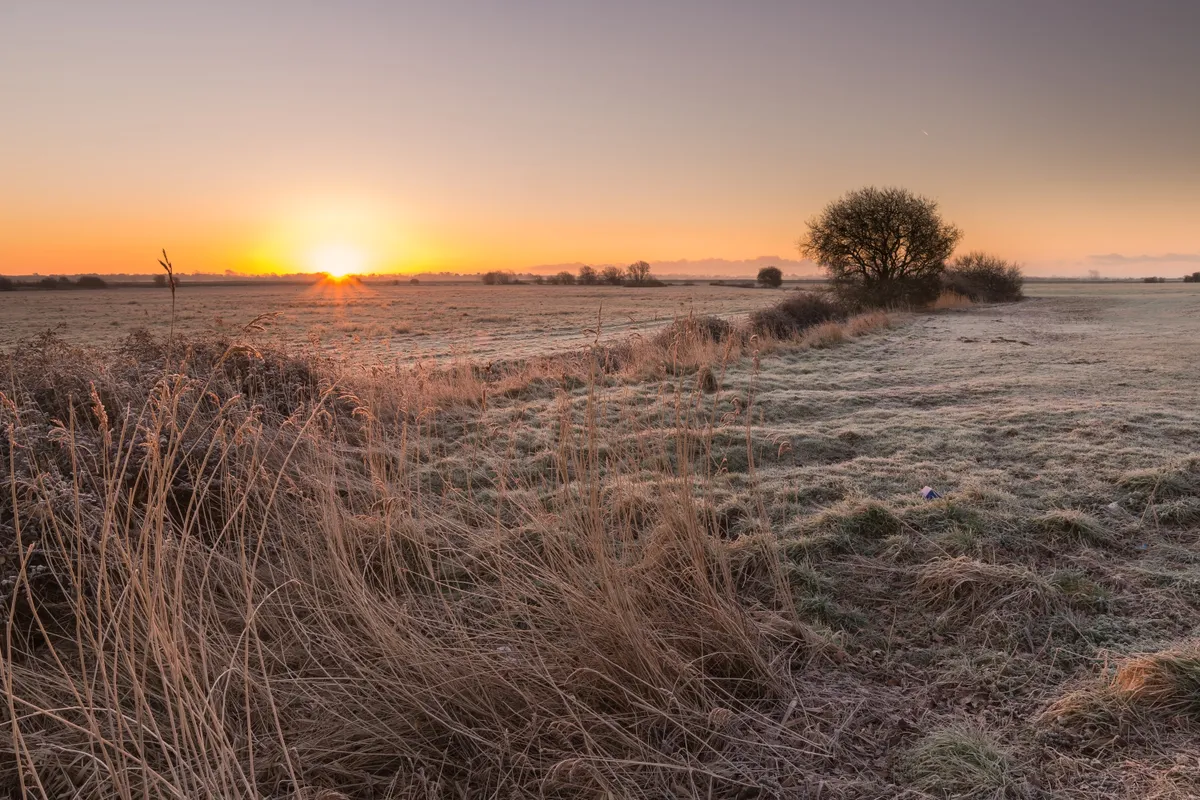
Sunflower heads are smorgasbords of high-energy food for sparrows, finches and nuthatches. Children not only enjoy growing sunflowers, measuring their height and marvelling at their huge flowers, but they can see their direct relationship with wildlife. By providing a feast of seeds in our gardens, birds feed in a wider area giving them greater safety than congregating at a feeder.
When winter comes, I am pragmatic about how much to cut back. Hardy geraniums, lady’s mantle and annuals collapse, becoming soggy and heavy if left until spring. These are composted or chopped up in situ to make a protective mulch. Any plant that has a strong architectural presence in winter is left standing, even being propped up just as they might be when flowering. Many are supple or strong enough to stand up to winter gales: wild carrot with its curled cups, prickly viper’s bugloss and, surprisingly, the thin pale moons of honesty. The once-widespread practice of ‘getting the garden ready for winter’ by levelling everything to the ground left no hiding places for wildlife.
Frost picks out the perfect and minute details; the hairy stems of Verbena bonariensis become many tiny points of light. Leaving the plant standing allows it to self-seed but it also protects this native of South America. Insects such as ladybirds and lacewings find shelter in the crevices of plants, in hollow stems or between stem and leaf.
Wildlife-loving plants for your garden
Great mullein Verbascum thapsus
This spectacular biennial grows tall with woolly silvery leaves and yellow flowers. Impressive under frost, it is used by wrens and robins as a look-out post to check for predators. (Left)
Purple Coneflower Echinacea purpurea
An excellent bee and butterfly plant, as echinacea’s petals fade, its raised cone remains. This disintegrates gracefully in winter as finches pull apart the head to feed on its seeds. (Bottom)
Star of Persia Allium christophii
All alliums look exciting under snow or frost when their starburst structure is revealed. A good bee plant, Allium christophii has huge lilac flowers followed by giant seed heads. (Top)
Silver Ghost Eryngium giganteum
Dramatically spiky, this silver-grey sea holly is one of the very best insect plants. On frosty mornings, every spiny bract of its sculptural seed head is outlined in ice crystals. (Right)
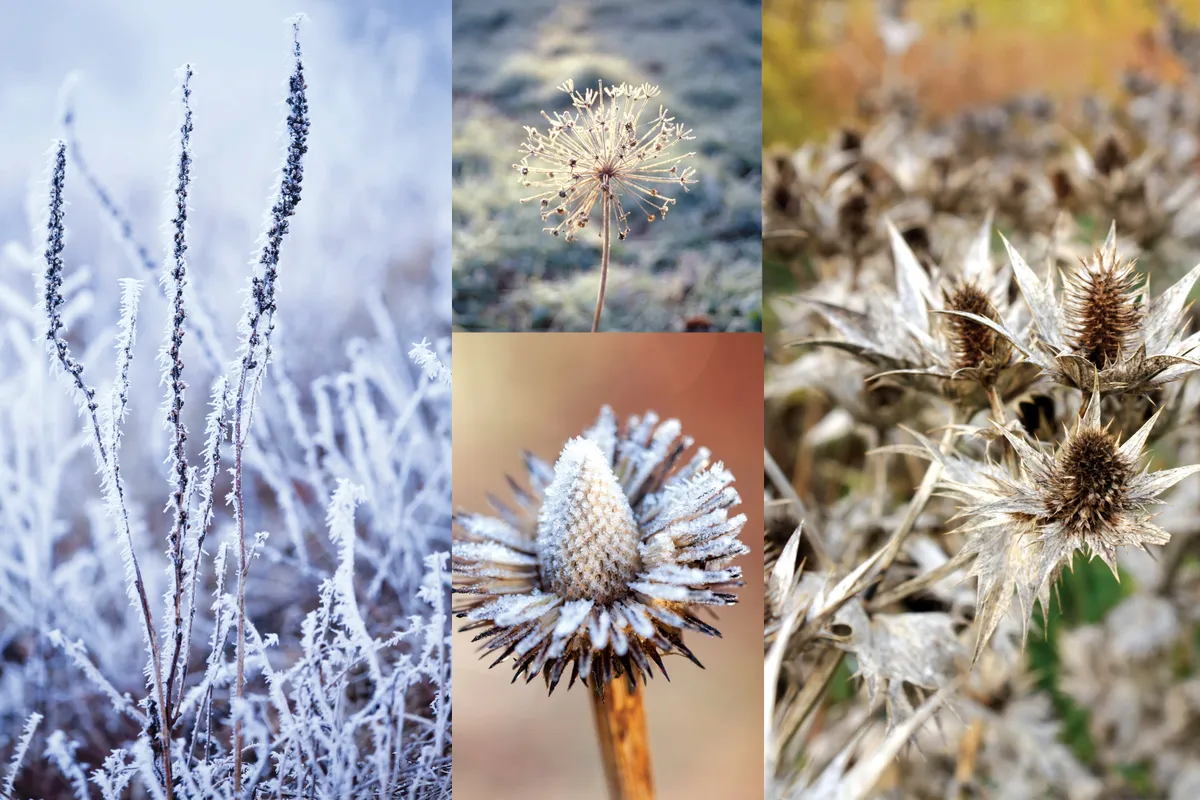
Grasses woven throughout the borders in a countryside garden establish another link with the landscape, echoing the winter colour of the surrounding fields. Golden oat grass, Stipa gigantea, creates fountains of tall stems topped with shimmering seed cases when lit up by the low sun. The feather reed-grass, Calamagrostis x acutiflora ‘Karl Foerster’, runs in a waving ochre band through the perennials and lasts until the early spring cut-down. This is when I trim deciduous grasses to the ground, and it’s the time of year when they can be divided and increased. Leaving it until spring protects the crowns. Use gloves to tease the dead leaves out of golden oat grass’ tufty clumps. I always watch out for hedgehogs when I do this as the thick tussock makes a perfect thatched house for them.
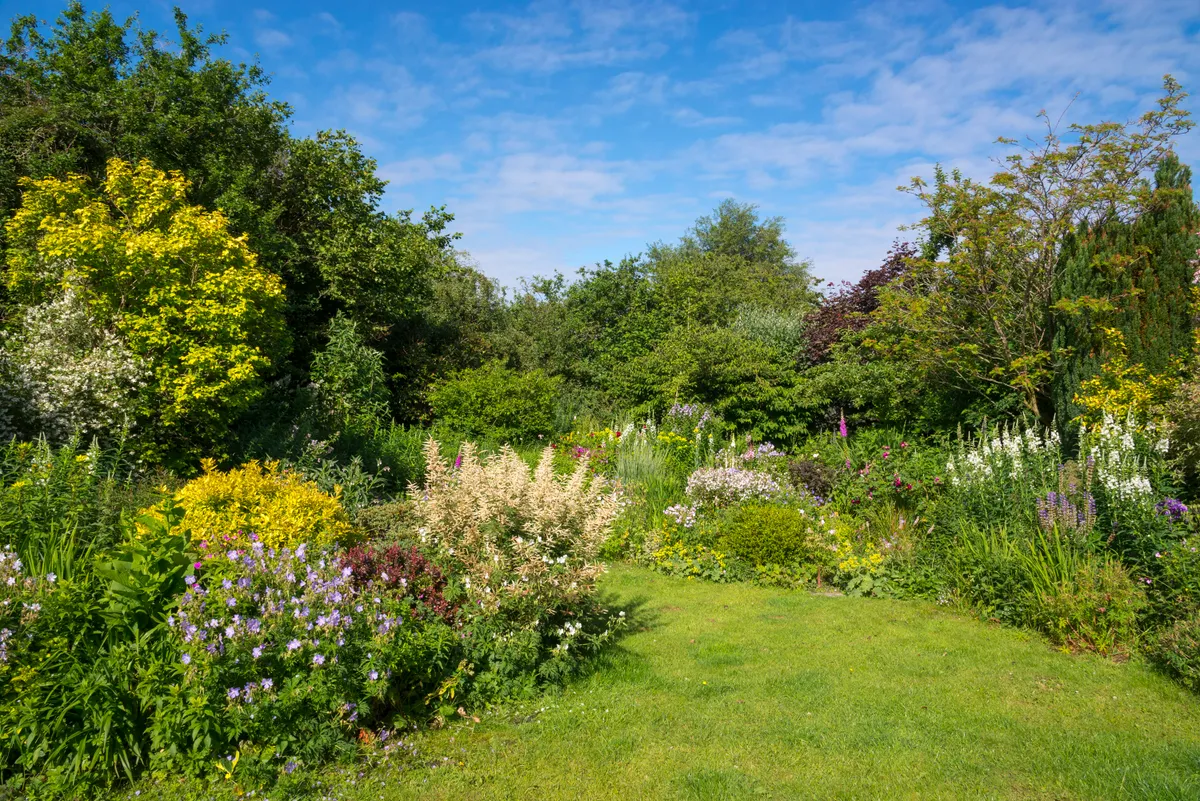
In the garden, fields and hedgerows, seed heads have a stark winter beauty, made magical on a frosty morning. Plant skeletons provide wonderful inspiration for artists. Their contrasting shapes and textures brought indoors are stunning natural sculptures to lift your spirits
How to identify seed heads
1
Wild angelica, Angelica sylvestris
A daintier purple-suffused version of garden angelica, its flowers are rich in nectar, attracting soldier beetles and hoverflies. Mice feed on the ridged brown seeds.
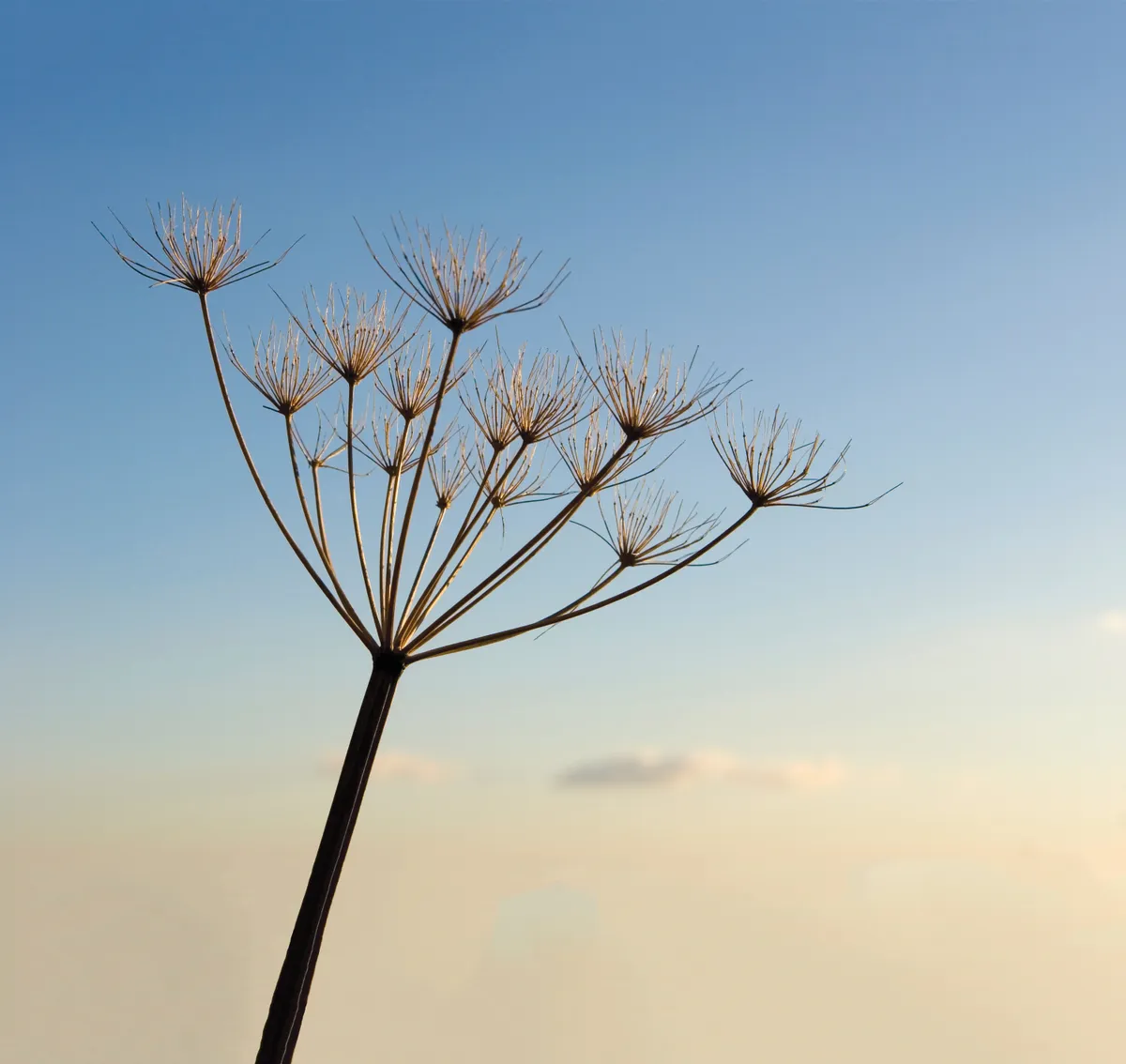
2
Great Reedmace / Bulrush, Typha latifolia
A wetland plant with brown seed heads like fat cigars, its seeds and the tiny moth caterpillars that live in the plump heads are eaten by bearded tits, stonechats and reed buntings.
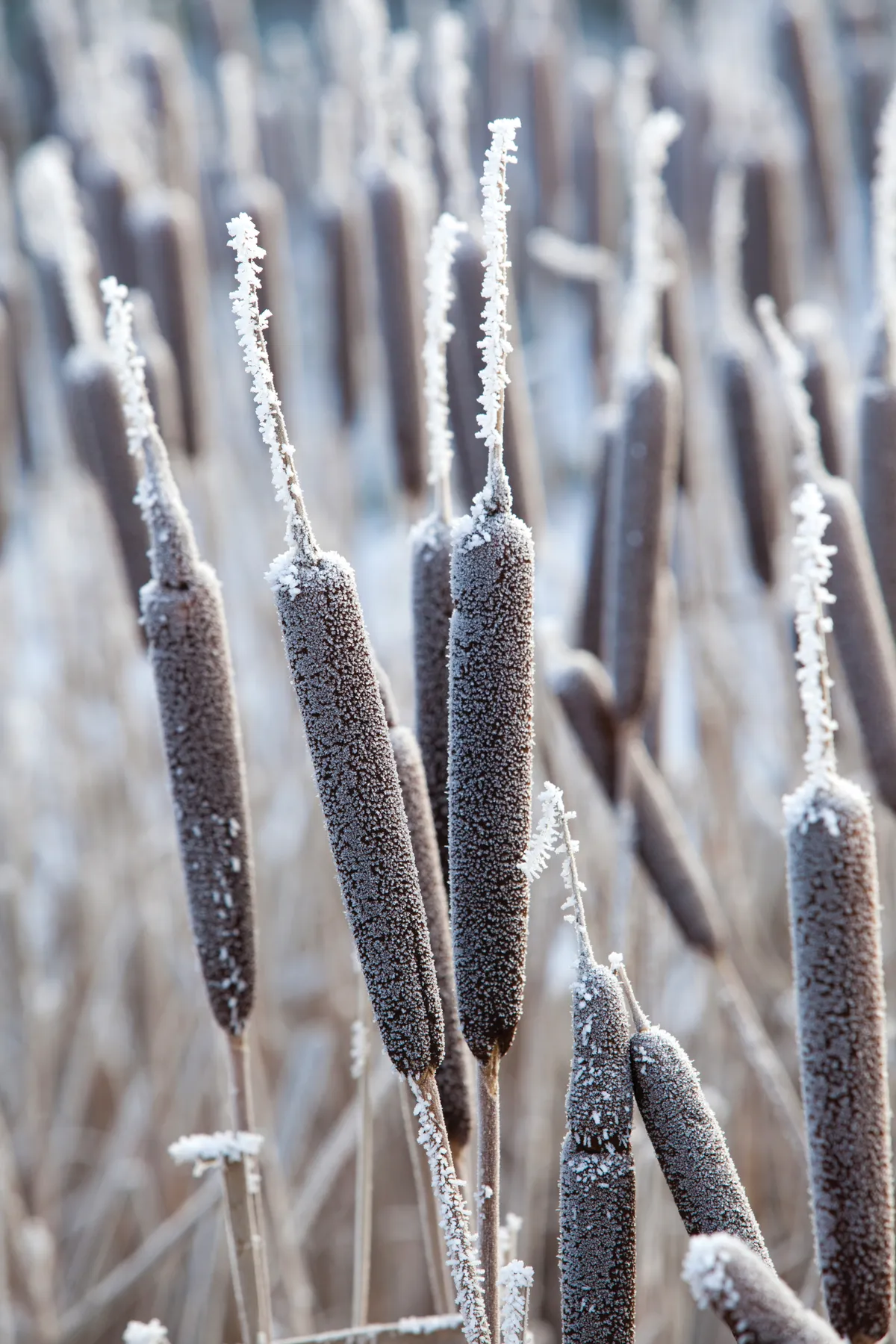
3
Old man’s beard / Traveller’s Joy, Clematis vitalba
Scrambling over trees, wild clematis flowers attract bees and hoverflies. The food plant of several moth species, goldfinches feed on its seeds and the fluffy seed heads make excellent nest material.
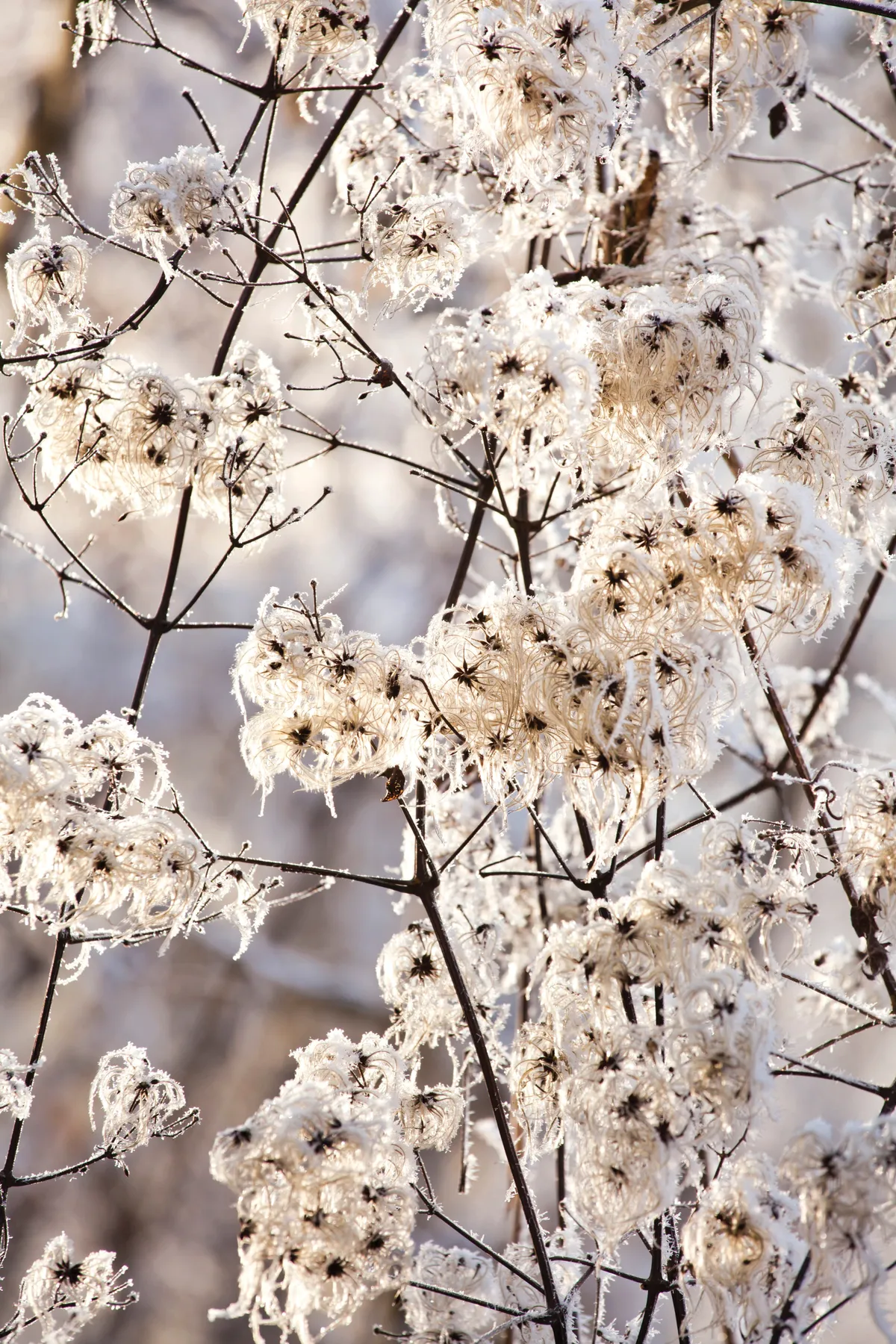
4
Poppy, Papaver rhoeas
Field poppies can lie dormant for decades before springing to life in disturbed soil. Their pepperpot seed heads scatter tiny black seeds, food for ground-feeding birds, such as sparrows and dunnocks.
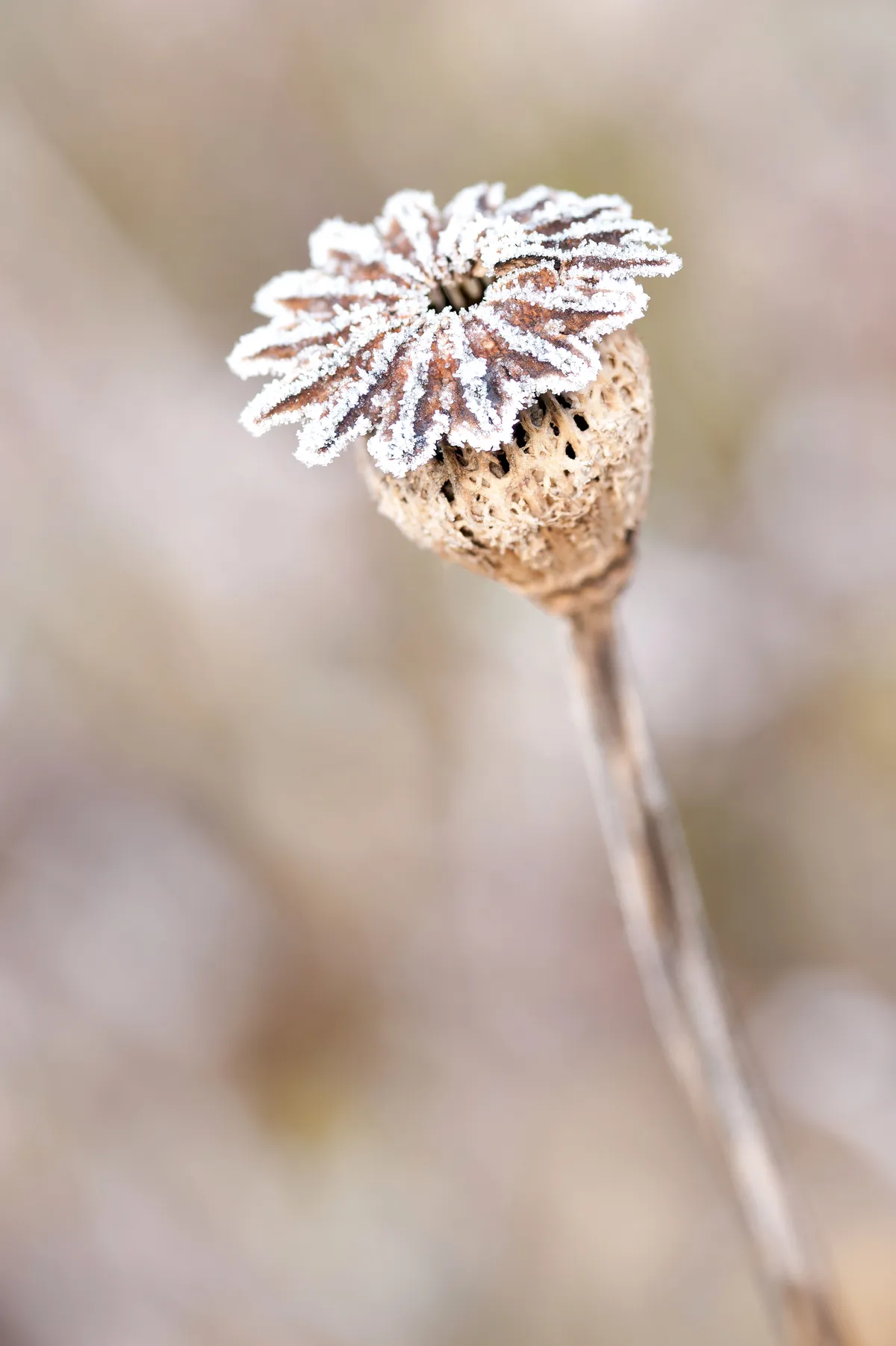
5
Knapweed, Centaurea nigra
Overlapping bracts create brown papery seed heads like small pine cones, giving the other common name of ‘hardheads’. Goldfinches descend in flocks to feed on this striking plant of verges and wasteland.
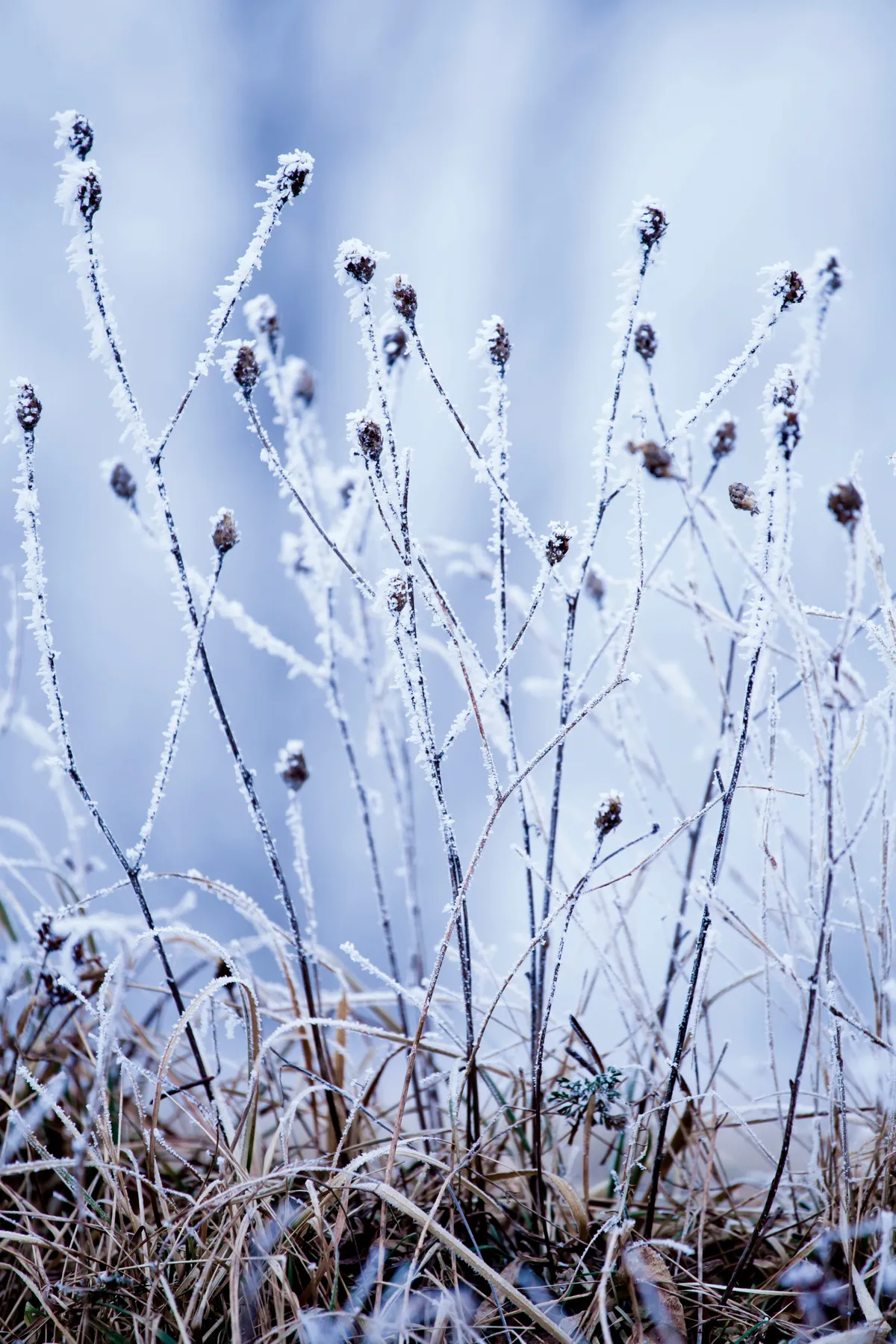
6
Teasel, Dipsacus fullonum
With an impressive winter profile, this tall architectural plant has bristly seed heads that are irresistible to goldfinches. Blue tits forage among them for insects.
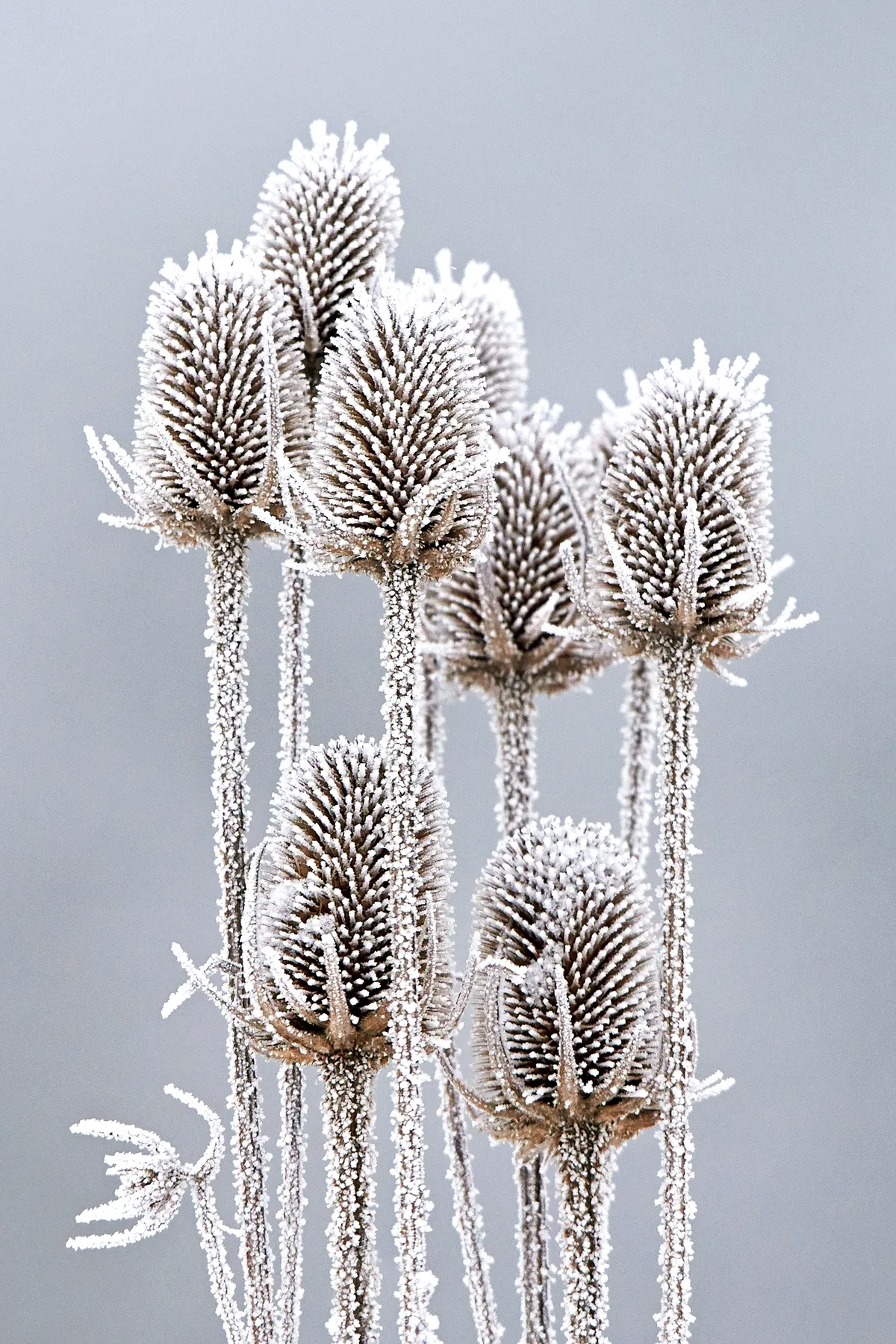
7
Honesty, Lunaria annua
A cottage garden favourite, honesty has purple, sometimes white flowers in spring followed by moon-like seed cases that last all winter. Bullfinches feed on its flattened circular seeds.
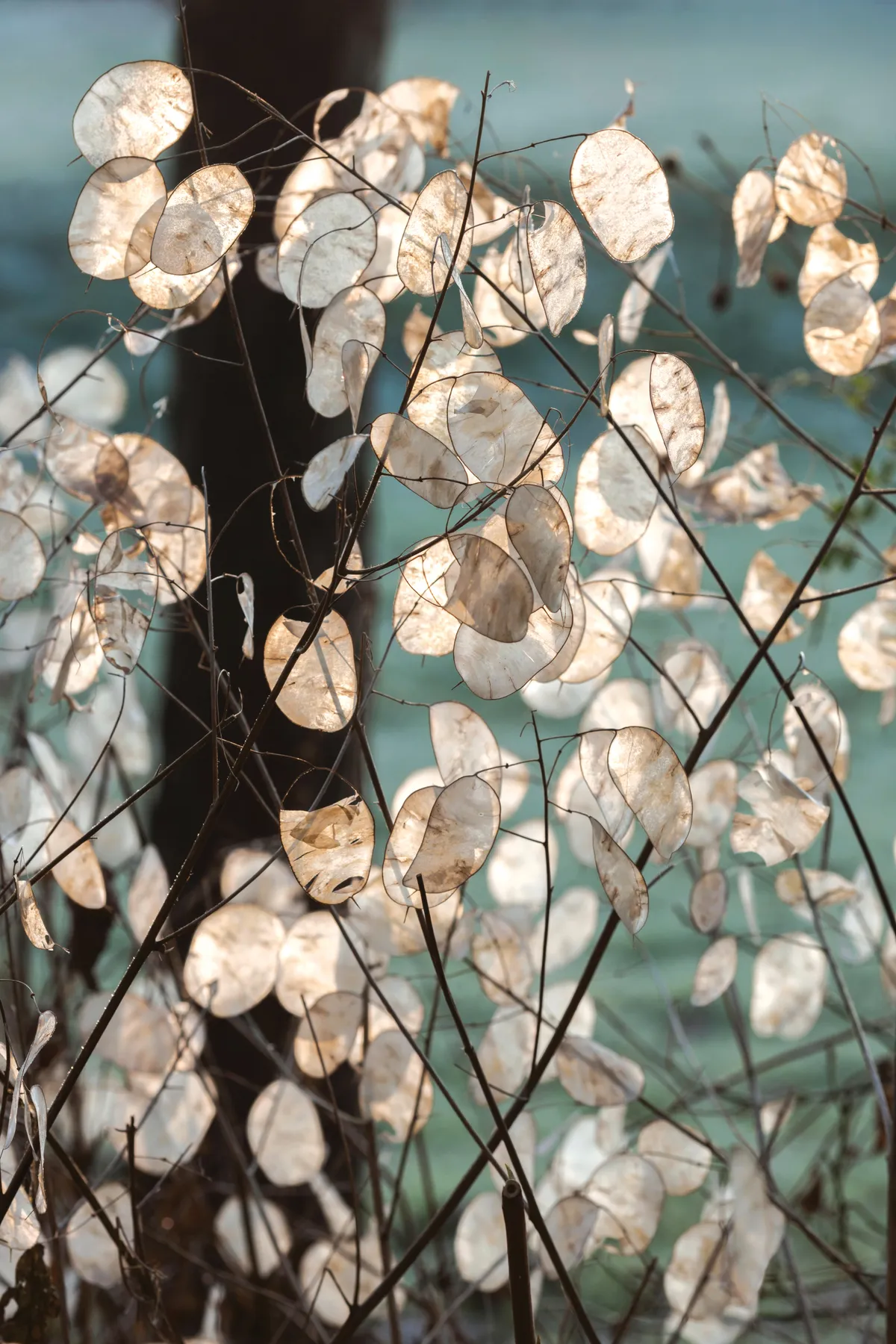
8
Wild carrot, Daucus carota
Host to a wide range of insects when flowering, its ripening seed heads curl inwards creating a beautiful cup. Spiders overwinter in this bowl and mice nibble on the spiny ridged seeds.
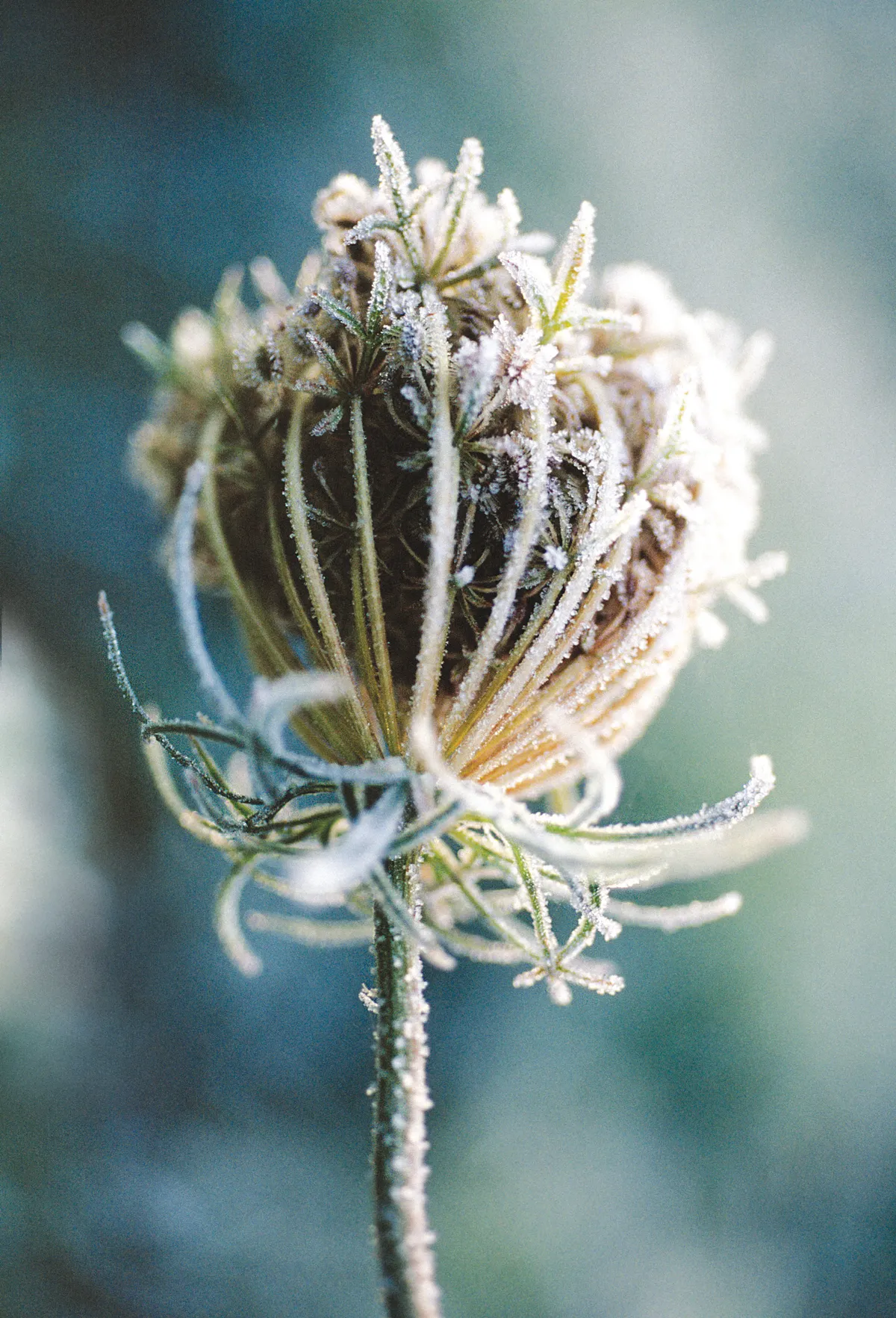
9
Common Reed, Phragmites australis
Reed beds are important wetland habitats that have a wild beauty in winter. Ruffled by wind, hoar frost defines every feathery seed head.
